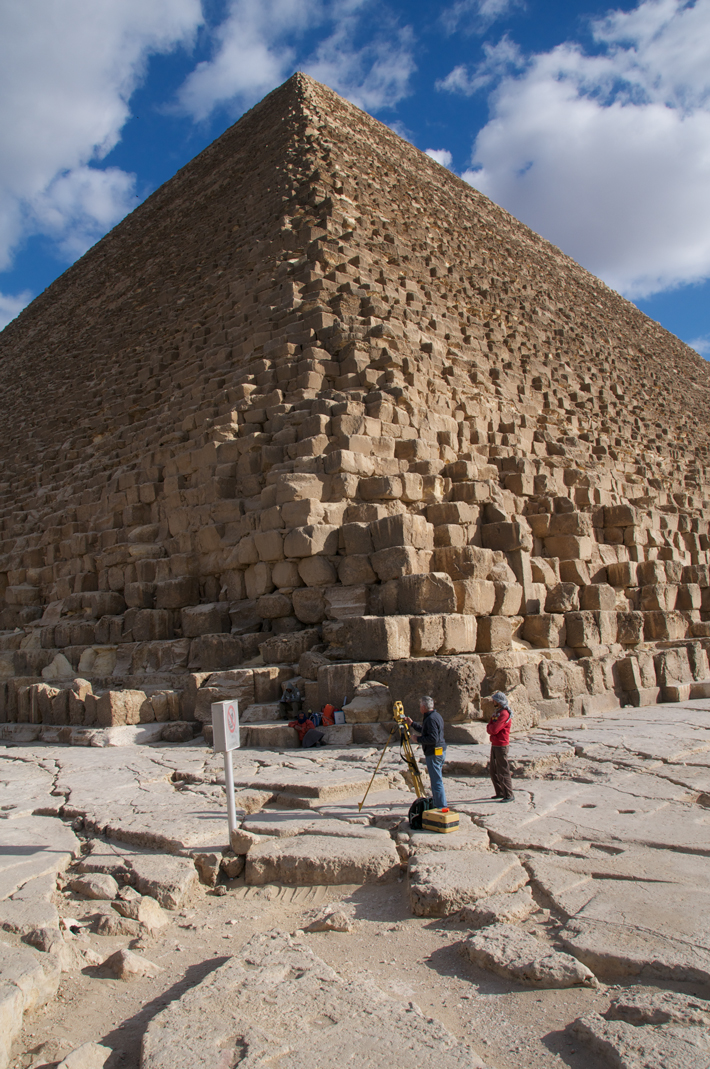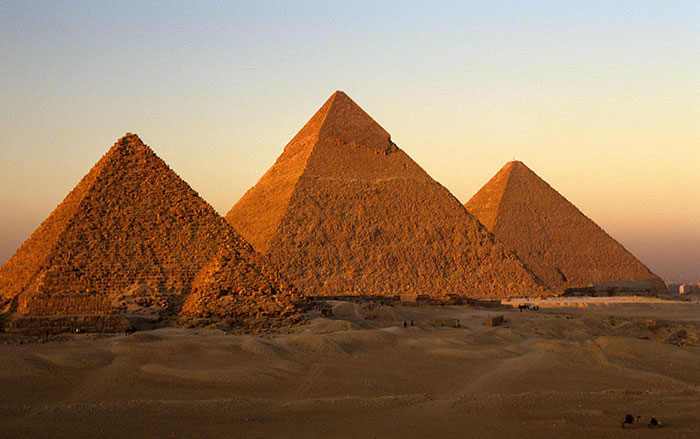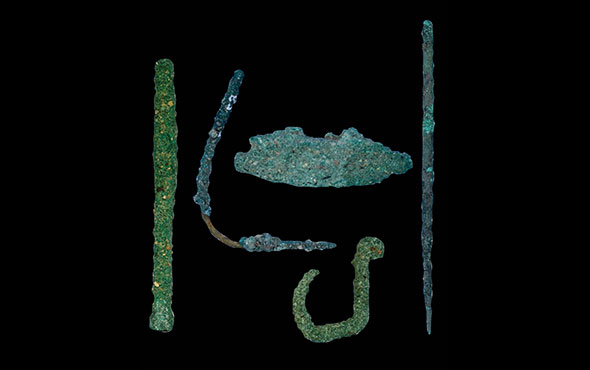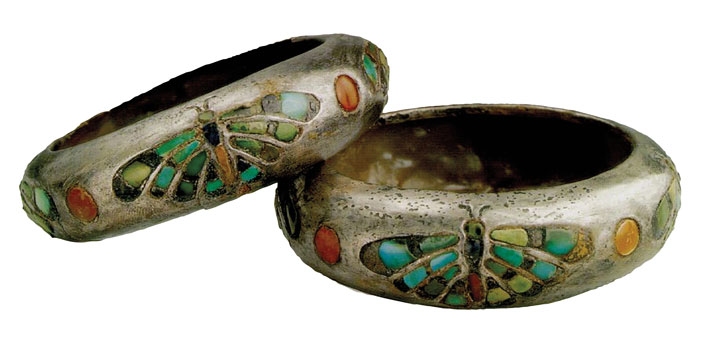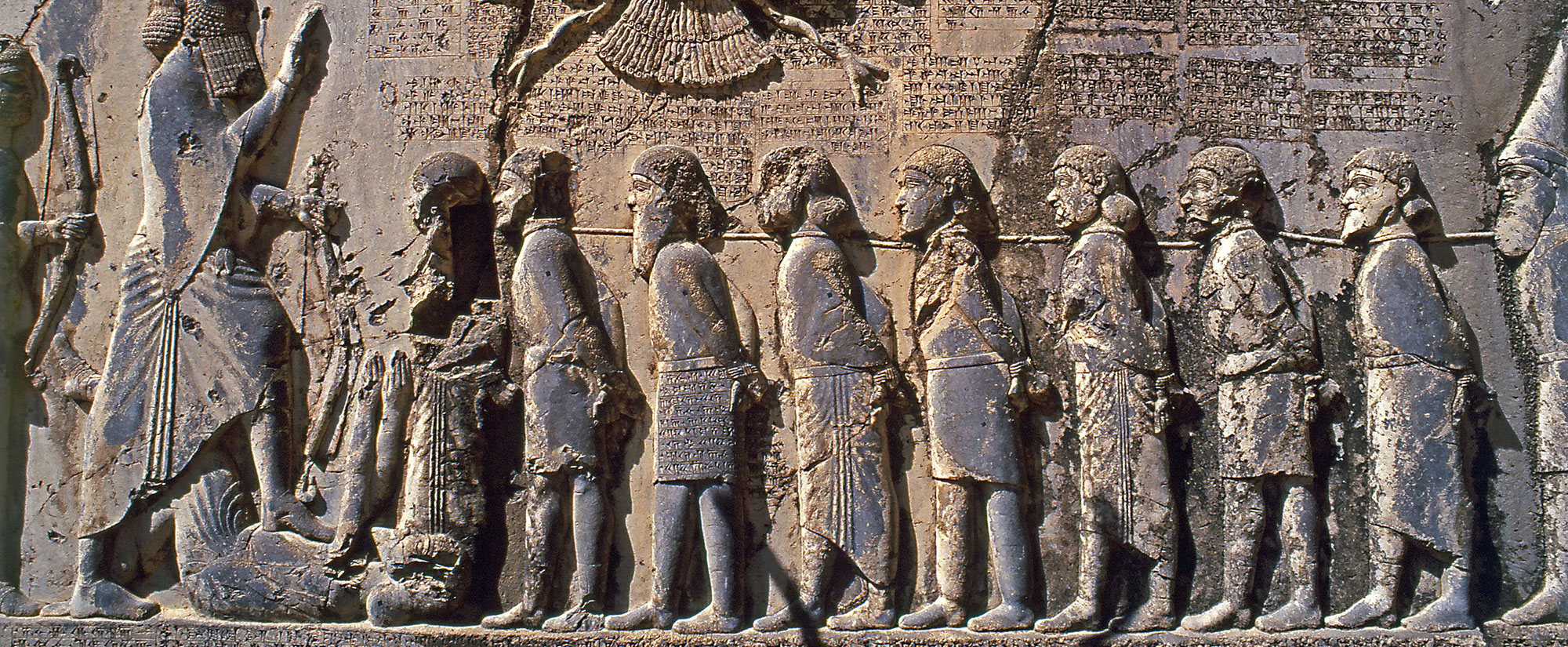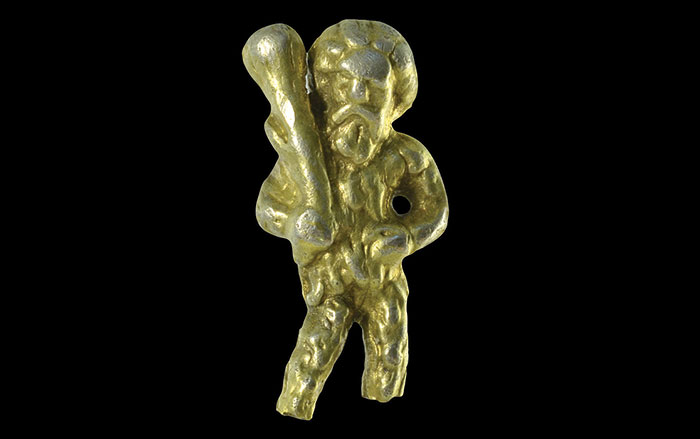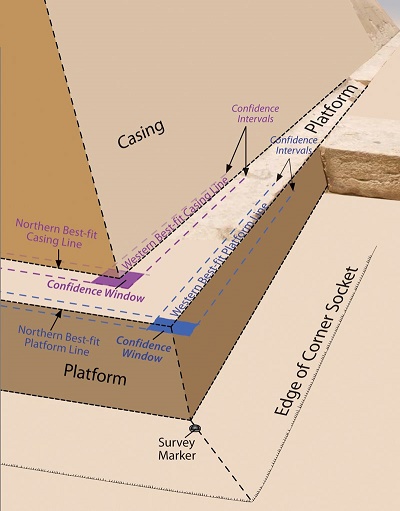
CAIRO, EGYPT—Engineer Glen Dash of the Glen Dash Research Foundation and Egyptologist Mark Lehner of Ancient Egypt Research Associates (AERA) took new measurements of the Great Pyramid of Giza to try to determine its original size and orientation. The 4,500-year-old pyramid, constructed for the pharaoh Khufu, is the largest of the three pyramids on the Giza Plateau, but most of its smooth limestone casing was removed and reused in antiquity. The scientists looked for surviving casing stones on the pyramid’s platform, and marks that suggest where the edges of the casing stones once rested. They found 84 points along the original edges and marked them on a grid system developed by AERA to map the Giza Plateau. Statistical analysis of the new measurements indicate the west side is longer than the east by between 0.25 and 5.6 inches to a 95% probability, with the best estimate of the error being 2.9 inches. “The base is not quite square,” Dash told Live Science. He suspects that the pyramid builders laid the structure out on a grid oriented on the cardinal directions, with just a slight degree of error. Additional research could reveal how the ancient Egyptians accomplished this feat. For more, go to "Egypt’s Immigrant Elite."


